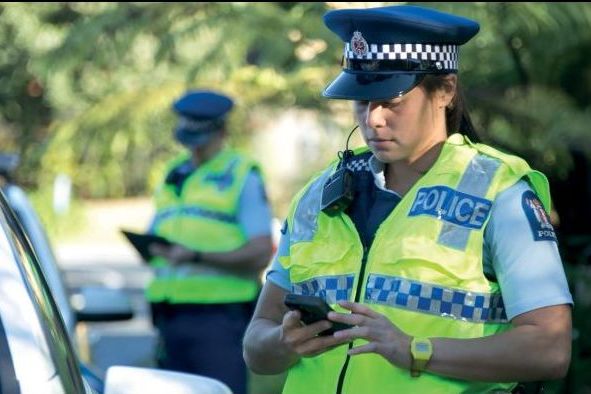Published on the 18/12/2014 | Written by Clare Coulson

A New Zealand Police report on its Policing Excellence initiative has shown how technology helped the organisation to exceed its predicted targets…
The Policing Excellence initiative, which began in 2009 and ended its bedding in period in July this year, has seen New Zealand Police transform from a largely reactive force to one focused on crime prevention and meeting the needs of victims. One of the ways it has achieved this is by harnessing the latest technology to deploy its resources in the right places at the right times. Indeed, the second phase of the project has now seen New Zealand Police and Vodafone partner to open a Mobility Innovation Lab and Experience Centre in Wellington. According to Vodafone the Centre will “provide an environment that fosters innovation, collaboration and encourages rapid deployment of ideas and tools that support day-to-day operational policing”.
Evaluating the first phase of the Policing Excellence initiative, Police Commissioner Mike Bush MNZM said in the report’s foreword that it has made the Police more mobile, visible, efficient and effective than ever before.
“Our results speak for themselves. When we embarked on Policing Excellence in August 2010, we set some very ambitious targets. These were a 13 percent reduction in recorded crime, a four percent increase in prevention activities and a 19 percent reduction in non-traffic prosecutions.
“We have exceeded each of those targets. When Policing Excellence ended on 30 June, 2014, recorded crime had reduced by 20.1 percent, prevention activities had increased by 5.8 percent and non-traffic prosecutions had reduced by 41.3 percent.”
Speaking to iStart about the technology aspects of the first phase of the initiative, Stephen Crombie, 2IC of strategy & executive director for information, technology and systems, said that New Zealand Police is now at the leading edge of technology usage within police forces and wants to be “the most tech-enabled police force in the world”. He said New Zealand’s police force is a good test bed for new technology initiatives because it is simultaneously large enough to be of interest internationally and not so large as to be unmanageable as a test case.
Mobility was at the core of the Policing Excellence initiative and the force has fielded more than 10,000 mobile devices including 6000 iPhones and 4000 iPads, so every officer has an iPhone from which they can query the main database in situ. The aim was to save 30 minutes per officer, per shift, per day. These targets have been met and the saved time has been reinvested into prevention-focused activities. Initially only database queries were available on the smartphones but the force has since added, and continues to add, forms so that officers can do as much as possible away from the station. All devices can be tracked, locked down and remote wiped if necessary and Crombie said that although there had been the odd loss of a device there have been no security issues resulting from it.
New Zealand Police also established a national and 12 district command centres to provide “intelligence-informed policing”. Crombie explained that the command centres were designed to provide commanders with visibility of what is actually happening in their district or even nationally and said there was a significant amount of technology implemented to enable this.
The command centres have SmartClient which offers a geospatial representation of all the events that are happening in real-time complete with some of the history; RIOD, or the Real Time Intelligence for Operational Deployment platform, which is used for preventative policing managing events and allows commanders to see the status of all officers and their skill-sets; Intergraph for dispatching officers; video feeds from various sources such as the New Zealand Transport Authority and local councils; social media intelligence gathering via the Signal system, and access to real-time images and information sent from officers’ mobile devices.
The third major implementation was the Crime Reporting Line for non-urgent crimes, which now handles 60 percent of all crime reports. This not only takes the load off the 111 lines but also creates a more standardised reporting system and helps to prioritise allocation of officers’ time.
Crombie said that Police used agile development methods to develop the mobility segments of the project , and is now rolling that out across development for its core systems. It transitioned its core intelligent systems and dispatch systems prior to beginning the project, building an Enterprise Service BUS interface between those older systems and the new applications. This enabled them to do agile development on top of the core systems without having to continually upgrade the core systems themselves. Crombie said this was incredibly useful for developing the mobile systems in particular. The choice to develop this way, in smaller 90-day projects, was made to reduce risk, he said, adding that they studied the happenings at Novopay very carefully and learnt from those.
The force is also moving its core systems to a private cloud situated in Revera’s data centre. New Zealand Police partnered with Intergen, Spark Digital and Intergraph for the technology improvements.




























This is a fantastic story and should be spoken about in a LOT of IT meetings across NZ and the globe.
All the media pick up on are failures like INCIS in the 90’s or Novopay but sometimes people need to hear success so that they realise the world is getting better (in some places)
This whole agile practice is the core of what we do and these sorts of stories of small quick projects that get lots of feedback from users is a BIG plus for the approach we are trying to promote…
Great article